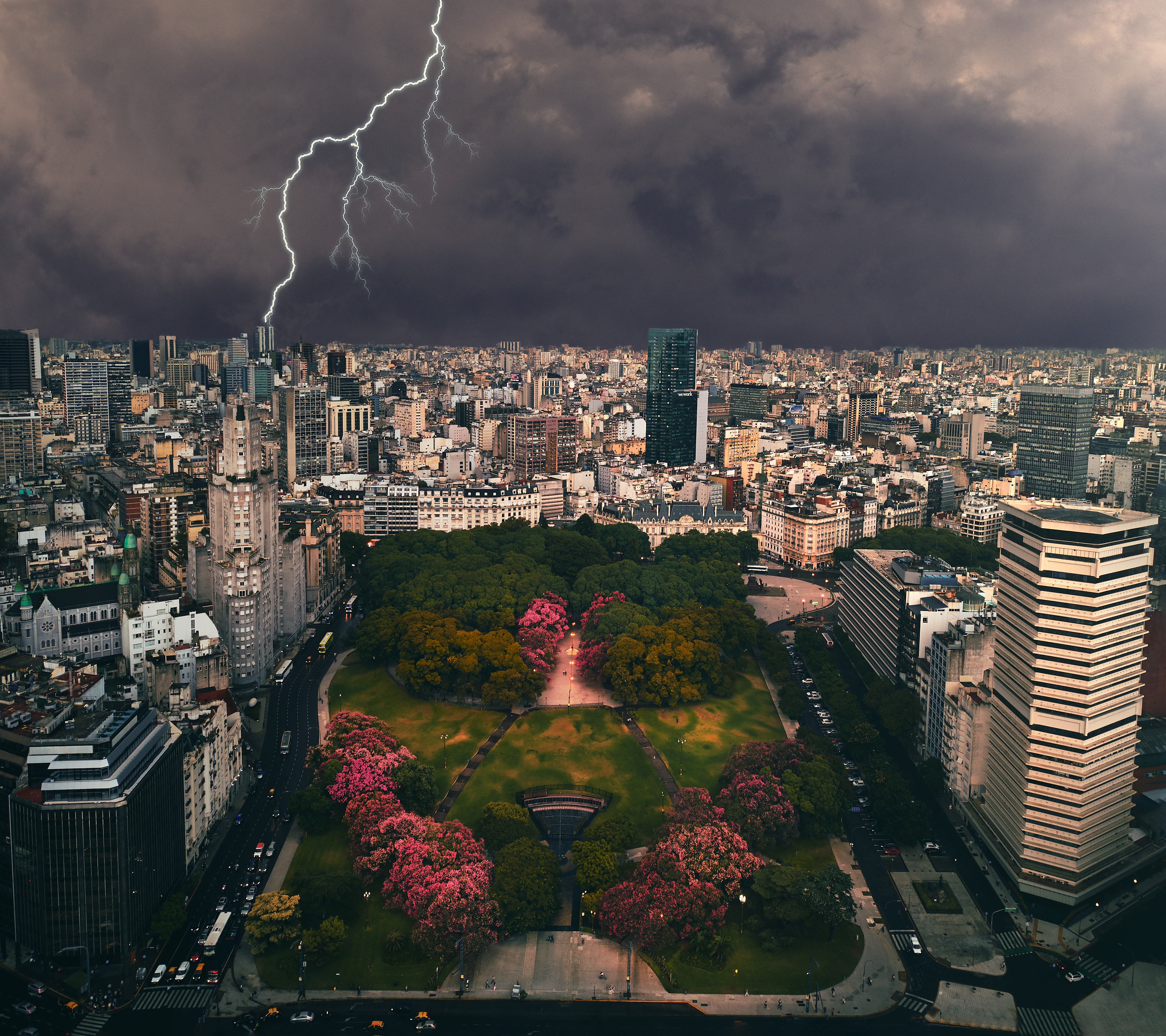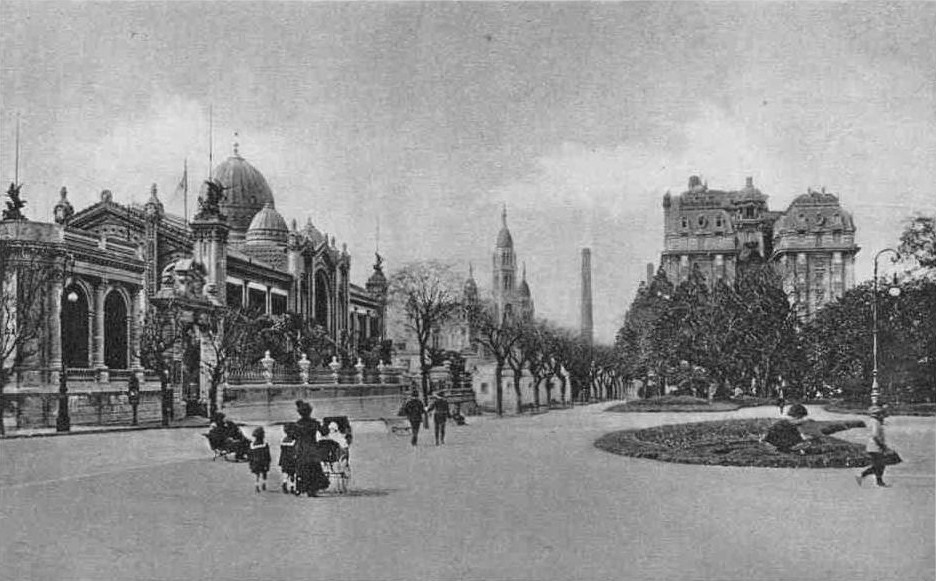Plaza San Martín (Buenos Aires) on:
[Wikipedia]
[Google]
[Amazon]
 Plaza San Martín (
Plaza San Martín (
 A succession of colonial
A succession of colonial 

 Following remodeling works by British architect Edward Taylor and Argentine architect José Canale, the fort, bullring and other buildings were demolished in 1883 by order of Mayor Torcuato de Alvear, converting the area into a plaza. Numerous
Following remodeling works by British architect Edward Taylor and Argentine architect José Canale, the fort, bullring and other buildings were demolished in 1883 by order of Mayor Torcuato de Alvear, converting the area into a plaza. Numerous
 Plaza San Martín (
Plaza San Martín (English
English usually refers to:
* English language
* English people
English may also refer to:
Peoples, culture, and language
* ''English'', an adjective for something of, from, or related to England
** English national ide ...
: ''San Martín Square'') is a park located in the Retiro neighbourhood of Buenos Aires
Buenos Aires ( or ; ), officially the Autonomous City of Buenos Aires ( es, link=no, Ciudad Autónoma de Buenos Aires), is the capital and primate city of Argentina. The city is located on the western shore of the Río de la Plata, on South ...
, Argentina. Situated at the northern end of pedestrianized Florida Street
Florida Street ( es, Calle Florida) is a popular shopping street in Downtown Buenos Aires, Argentina. A pedestrian street since 1971, some stretches have been pedestrianized since 1913.
The pedestrian section as such starts at the intersection ...
, the park is bounded by Libertador Ave. (N), Maipú St. (W), Santa Fe Avenue (S), and Leandro Alem Av. (E). Its coordinates are .
History
 A succession of colonial
A succession of colonial Spanish
Spanish might refer to:
* Items from or related to Spain:
**Spaniards are a nation and ethnic group indigenous to Spain
**Spanish language, spoken in Spain and many Latin American countries
**Spanish cuisine
Other places
* Spanish, Ontario, Can ...
governors had their official residences built on what today is the plaza and, in 1713, the land was sold to the British
British may refer to:
Peoples, culture, and language
* British people, nationals or natives of the United Kingdom, British Overseas Territories, and Crown Dependencies.
** Britishness, the British identity and common culture
* British English, ...
South Sea Company
The South Sea Company (officially The Governor and Company of the merchants of Great Britain, trading to the South Seas and other parts of America, and for the encouragement of the Fishery) was a British joint-stock company founded in Ja ...
. The South Sea Company operated their slave trade
Slavery and enslavement are both the state and the condition of being a slave—someone forbidden to quit one's service for an enslaver, and who is treated by the enslaver as property. Slavery typically involves slaves being made to perf ...
out of the former governor's residence and a fort and bullring were later built nearby. The land was the site of Gen. John Whitelocke's 1807 defeat upon Britain's second attempt to conquer Buenos Aires, whereby the area became known as the "Field of Glory". The Revolution of 1810 brought an autonomous government to Buenos Aires, which entrusted the Mounted Grenadiers to José de San Martín
José Francisco de San Martín y Matorras (25 February 177817 August 1850), known simply as José de San Martín () or '' the Liberator of Argentina, Chile and Peru'', was an Argentine general and the primary leader of the southern and centr ...
and allowed him to establish his main barracks at the plaza. An 1813 resolution abolished the slave trade in the United Provinces of the Río de la Plata
The United Provinces of the Río de la Plata ( es, link=no, Provincias Unidas del Río de la Plata), earlier known as the United Provinces of South America ( es, link=no, Provincias Unidas de Sudamérica), was a name adopted in 1816 by the Co ...
and the slave quarters were shuttered. Following his decisive military victories, Gen. San Martín was forced into exile in 1824 for political reasons; but a reappraisal of his place in history led to his becoming nearly eponymous
An eponym is a person, a place, or a thing after whom or which someone or something is, or is believed to be, named. The adjectives which are derived from the word eponym include ''eponymous'' and ''eponymic''.
Usage of the word
The term ''epon ...
in Argentina after his death in 1850. Accordingly, French sculptor Louis-Joseph Daumas
Louis-Joseph Daumas (1801–1887) was a French sculptor and medallist.
Born in Toulon, Daumas was admitted into the École nationale supérieure des Beaux-Arts in 1826, and entered the ''atelier'' of David d'Angers.American architect and archit ...
was commissioned in 1862 to create an equestrian statue of the hero of the Wars for Independence and the square was renamed in his honor in 1878, upon the hundredth anniversary of his birth.


 Following remodeling works by British architect Edward Taylor and Argentine architect José Canale, the fort, bullring and other buildings were demolished in 1883 by order of Mayor Torcuato de Alvear, converting the area into a plaza. Numerous
Following remodeling works by British architect Edward Taylor and Argentine architect José Canale, the fort, bullring and other buildings were demolished in 1883 by order of Mayor Torcuato de Alvear, converting the area into a plaza. Numerous Ombú
''Phytolacca dioica'', commonly known as ombú, is a massive evergreen tree native to the Pampa of Argentina. As its specific epithet suggests, it is dioecious, with male and female flowers on separate plants. It has an umbrella-like canopy that ...
, Linden and Floss Silk trees were planted. The same administration also shaped the Plaza de Mayo
The Plaza de Mayo (; en, May Square) is a city square and main foundational site of Buenos Aires, Argentina. It was formed in 1884 after the demolition of the Recova building, unifying the city's Plaza Mayor and Plaza de Armas, by that time kn ...
, nearby and in 1889 French urbanist Charles Thays
Carlos Thays (August 20, 1849 – January 31, 1934)Biog ...
was commissioned to give the plaza its approximate current form (among numerous other designs he left Argentina over the next twenty years). The plaza became the preferred surroundings for some of Argentina's wealthiest landowners around 1900. Three architecturally significant mansions facing the plaza surviving today were the Beaux Arts San Martín Palace (today the ceremonial annex of the Foreign Ministry), the Second Empire Second Empire may refer to:
* Second British Empire, used by some historians to describe the British Empire after 1783
* Second Bulgarian Empire (1185–1396)
* Second French Empire (1852–1870)
** Second Empire architecture, an architectural styl ...
Paz Palace
The Paz Palace is a former mansion in Buenos Aires, Argentina, housing the Military Officers' Association, a social club maintained by the Argentine military.
Overview
One of Buenos Aires' most traditional social clubs, the Military Officers' As ...
(today the Military Officers' Association) and the Neogothic
Gothic Revival (also referred to as Victorian Gothic, neo-Gothic, or Gothick) is an architectural movement that began in the late 1740s in England. The movement gained momentum and expanded in the first half of the 19th century, as increasingly ...
Haedo Palace (today the offices of the National Parks Administration).
The park was the site in 1909 of the inaugural of both the first premier hotel in Argentina (the Plaza
A town square (or square, plaza, public square, city square, urban square, or ''piazza'') is an open public space, commonly found in the heart of a traditional town but not necessarily a true geometric square, used for community gatherings. ...
) and of the new National Museum of Fine Arts, for which the glass and steel pavilion used at the 1889 World's Fair in Paris was enlisted; structurally inadequate, the pavilion was demolished in 1932, however. Plaza San Martín and its surroundings acquired their current physiognomy in 1936, when Charles Thays' son, Carlos León Thays, designed the esplanade surrounding the monument and when the 33-story Art Deco
Art Deco, short for the French ''Arts Décoratifs'', and sometimes just called Deco, is a style of visual arts, architecture, and product design, that first appeared in France in the 1910s (just before World War I), and flourished in the Unite ...
Kavanagh building was completed. Though the surrounding area has since seen much of its older architecture replaced by high-rises (notably the 1975 Pirelli building), the plaza has remained timeless. Its western section was separated to make way for a rerouting of Maipú Street in 1972; but President Néstor Kirchner
Néstor Carlos Kirchner (; 25 February 195027 October 2010) was an Argentine lawyer and politician who served as the President of Argentina from 2003 to 2007, Governor of Santa Cruz Province from 1991 to 2003, Secretary General of UNASUR and ...
ordered the change reverted in 2004, in response to long-standing appeals by neighbours and friends of the park.
Events
In spring 2009 an exhibition of the "United Buddy Bears
''Buddy Bears'' are painted, life-size fiberglass bear sculptures developed by German businesspeople Klaus and Eva Herlitz, in cooperation with sculptor Roman Strobl. They have become a landmark of Berlin and are considered unofficial ambassa ...
" was held in the park, for the first on the American continent. The exhibition consisted of more than 140 bear sculptures, each two metres high and designed by a different artist.
References
{{DEFAULTSORT:Plaza San Martin (Buenos Aires) San Martin